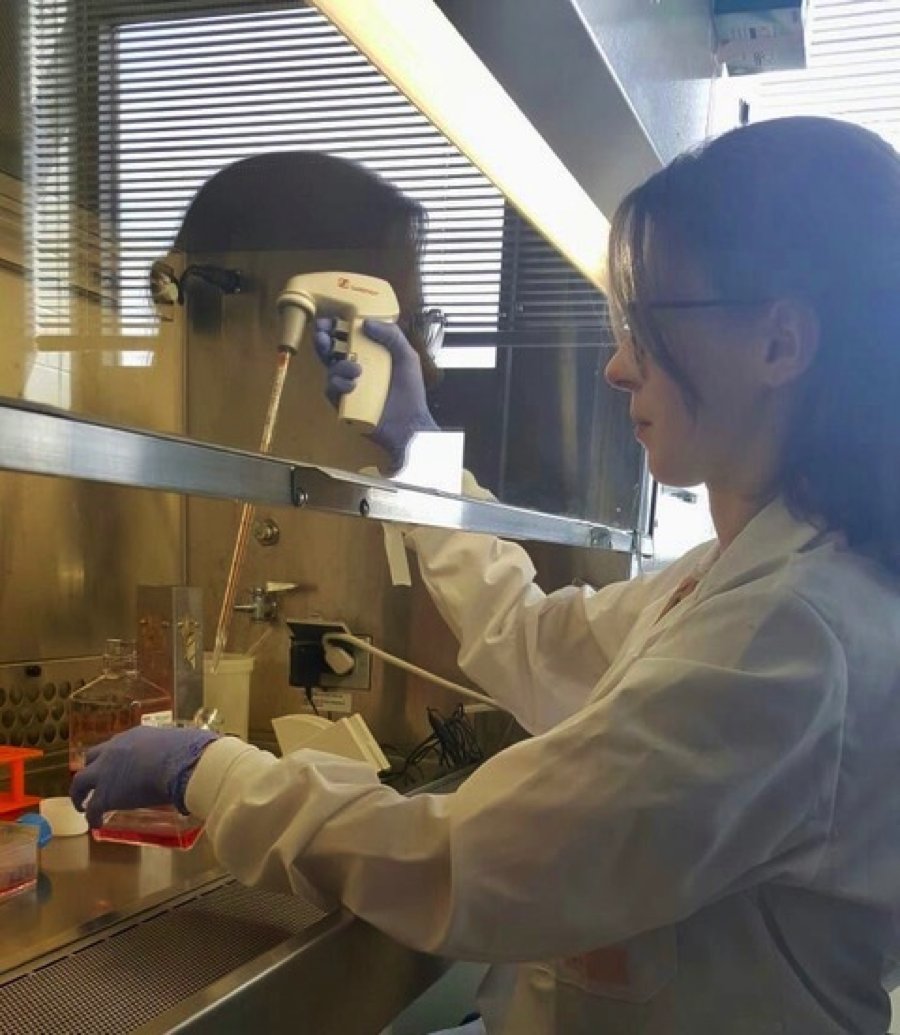
Big Impact in Bio: Creatively Engineering Tissue Solutions
The word “creativity” may not be traditionally associated with scientific research, but for Elisa D’Arcangelo, it sums up some of the aspects she most values about being a biomedical engineer. As a tissue engineer, she must come up with creative solutions for growing tissue in the lab that can help shape new therapies for cancer and other diseases.
It’s part of why she has been passionate about biology from a young age – that biology’s complexity necessitates creative problem solving. “There is always another level of complexity behind every biological phenomenon,” she explains. “There is always another why and how to ask, and answering these questions makes us better at improving our lives.”
As an Amgen Scholar at the Karolinska Institute in Sweden in 2011, D’Arcangelo learned from the first day in the lab the importance of thinking creativity and independently as a researcher: “I remember the first day I was left alone in the lab,” she says. “I had just spoken to my supervisor who had instructed me to do this and that, and I have to say I understood only the broad strokes of it. I remember thinking: ‘and now what?’”
With the help of other students and researchers, D’Arcangelo was able to forge ahead, but it was a quick lesson she has never forgotten. “Being an Amgen Scholar and getting to experience research in the context of a new lab and a new project definitely instilled in me a sense of academic leadership: the will and discipline to figure something out, where to get the information and resources I needed, how to actualize ideas, and materialize tangible progress.”
That lesson carried through her undergraduate career at University College Dublin and to her work now as Ph.D. student at the Institute of Biomaterials and Biomedical Engineering at the University of Toronto, Canada. “Tissue engineering labs are exceptionally interdisciplinary and creative environments,” she says. “To build a tissue, one must understand its key contributing parts and how they interact within a single environmental space.”
Traditionally, tissue engineering efforts have been geared toward growing healthy tissues for organ replacement. Now, it’s being used in novel ways to de-risk the process of drug discovery. “Tissue engineering is contributing to the identification of cancer therapeutic agents by devising procedures and devices for growing cancer tissue in controlled lab conditions,” D’Arcangelo explains.
She has created a new method to observe and record how tissue architecture evolves in lab-grown, multi-component tumor tissue. “The model deepens our understanding of how individual tissue components reshape their environment and will point to new therapeutic strategies,” D’Arcangelo says. Already, other scientists have begun using the model: “Hopefully, it will develop a life of its own, with other researchers finding novel ways to use and improve it.”
After completing her Ph.D., D’Arcangelo plans to pursue postdoctoral research while also exploring positions outside academia. “I enjoy having independence and creative license as a researcher and hope to work on projects that have a clear path to translation or are clinically motivated,” she says.
A guiding principle for D’Arcangelo is to strive to remain actively in charge of her career path. “Every new research position, regardless of whether in industry or in academia or elsewhere, must bring you closer to your passions. Don’t be content with the next-best or most commonly chosen path, but instead step out of your comfort zone.”

